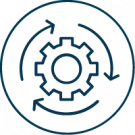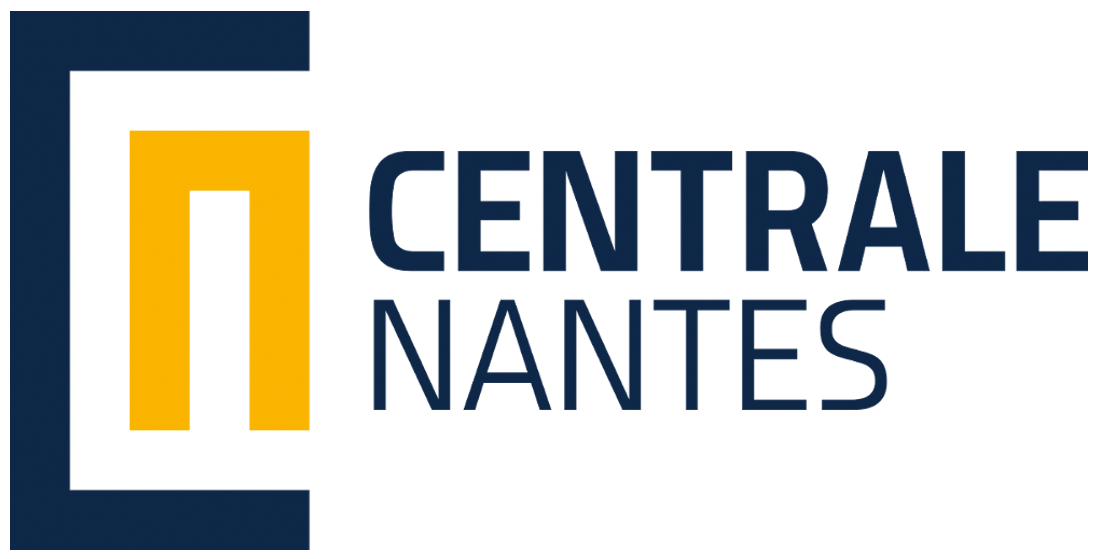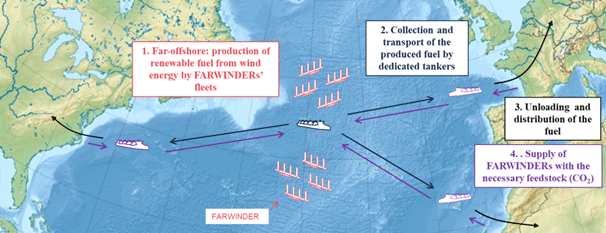
Background
The LHEEA research department of Ecole Centrale De Nantes – CNRS has been working on energy ships for far-offshore wind energy conversion since 2016. This concept didn’t receive much attention until 2000s (e.g. Tsujimoto et al. and Platzer & Sarigul-Klijn in 2009, and Kim & Park in 2010). In 2017, Gilloteaux & Babarit were the first to propose the use of autonomously-sailing energy ships. In total only a few concepts have been proposed. Yet, no experimental proof-of-concept has been built. Thus, the energy ship concept is still in the very early stages (TRL is 2 “Technology concept formulated”). The next TRL stage is 3 “Experimental proof of concept”. This is the main objective of the WEREVER_DEMO project which includes the WEREVER DEMO PLATFORM project.
Scientific advances and innovation
The experimental platform which will be developed in the WEREVER DEMO PLATFORM project will be the world first test platform for the testing of components and subsystems for far-offshore wind energy conversion.
Expected technical and economic impact
A new concept has emerged for far offshore wind energy conversion. It is the wind energy ship. It consists of a ship propelled by wind sails towing a water turbine. The water turbine produces electricity. The electricity is converted into a fuel (hydrogen for example). The stored energy is brought to shore by dedicated tankers.
The wind energy ship is complementary to grid-connected bottom fixed or floating wind turbines. Indeed, in contrast to the wind energy ship, grid-connected turbines cannot be deployed far offshore because of the grid-connection and moorings and foundations costs. Morever, a key feature of the wind energy ship is its mobility. Thus, its energy performance can be optimized with respect to the weather using weather routing. This may result in significantly higher capacity factors than other renewable energy sources.
The equipment bought in the WEREVER DEMO PLATFORM project will enable the development of an experimental test plaform for components and subsystems of wind energy ships. It will firstly be used for an on-going PhD project co-supervised by LHEEA and IREENA, and then in the frame of the European FARWIND project (to be submitted). It is expected that other projects will follow.
Key project milestones
- April 30, 2018 - Project start date
- April 30, 2021 - End date
Results
A second-hand Hobie Cat Tiger (sailing sport catamaran) was selected as the starting point for the development of the platform. It corresponds approximately to a 1/14 scale version of a possible FARWIND prototype.
The water turbine and power electronics were purchased from Efficiensea. The power electronics was specifically developed for the platform.
Other sensors include an ultrasonic anemometer, two ultrasonic velocimeters (one in each hull), an IMU, a mast angle sensor and a force sensor. The force sensor was developed in-house while the other sensors were purchased from vendors (through wifi).
The data acquisition system was developed in-house. It includes a remote transmission capability of measurements.
The equipments were installed onto the platform in Spring 2019.
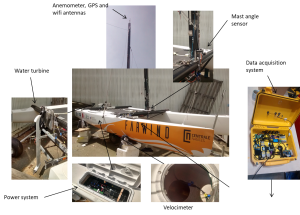
The FARWINDER-a test platform
Experiments were carried out on May 7th 2019 and July 5th 2019 on the river Erdre, near Nantes, at the plaine de Mazerolles. Results were analyzed. They show that:
- the energy ship concept does work in practice (experimental validation)
- The energy production is significant and in good agreement with predictions of numerical models (75W by force 2 corresponding to approximately 800kW by force 5 at full scale).
- Water turbine drag optimiation is key to maximize power production (see figuree below).
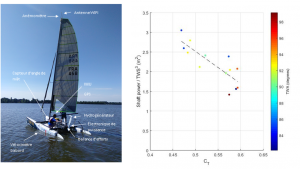
Left: The FARWINDER test platform. Right: measurement results for the power production as function of the thrust coefficient of the water turbine
Publications and papers published
Oral communications
- Validation expérimentale du principe du voilier-hydrolienne pour la récupération de l’énergie du vent en haute mer. Babarit, N. Abdul-Ghani, E. Brouillette, S. Delvoye, M. Weber, A. Merrien, J. Templai, V. Frémont, M. Michou, S. Bourguet, J-C. Gilloteaux. Journées de l’hydrodynamique 2020, 24/26 november 2020, Online
- Experimental validation of the energy ship concept for far-offshore wind energy conversion. Babarit, N. Abdul-Ghani, E. Brouillette, S. Delvoye, M. Weber, A. Merrien, J. Templai, V. Frémont, M. Michou, S. Bourguet, J-C. Gilloteaux. Ocean engineering (in preparation-2021)
Prospects
The experimental plaform is currently being upgraded in the frame of the WEAMEC projects AUTOFLEET_Y1 and AUTOFLEET_PLUS.
